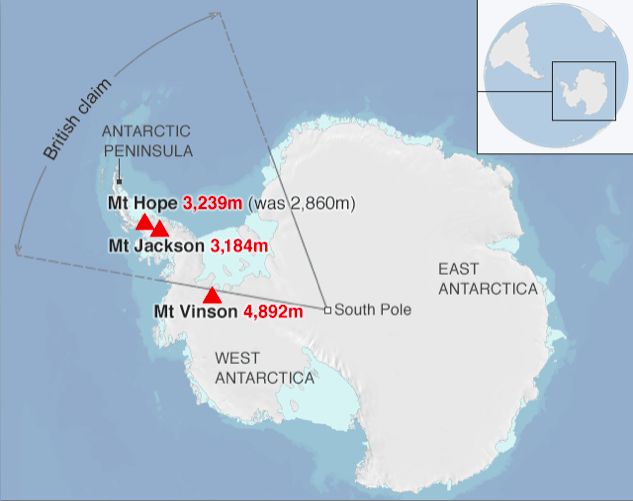There are no items in your cart
Add More
Add More
| Item Details | Price | ||
|---|---|---|---|
GS Paper 2: Indian Polity and International Relations: Important International Institutions.
Context-:
At a meeting this week, leaders of the European Union (EU) agreed to start negotiations for Ukraine’s accession to the EU.
Hungary’s Prime Minister Viktor Orban, who had vowed to oppose this move, allowed the decision to go through.
But he blocked the EU’s €50 billion aid package for Ukraine.
Why Hungary Blocked the aid-:
He has been opposed to the financial package because a non-EU member should not be getting such huge funds at a time when Hungary, an EU member-state, has been denied funds that were specifically allocated for it.
Hungary believes that Ukraine should first serve as a strategic partner of the EU for some time before membership talks can begin.
Backdrop of the Move -:
The EU had frozen substantial funds earmarked for Hungary because Hungary had violated EU norms on law and order and judicial independence.
Analysts believe Hungary has sought to use its veto power on Ukraine’s long-term funding as well as formal membership talks as a bargaining chip to get the EU to unfreeze these funds.
A day before the summit meeting, the EU released €10 billion of frozen funds to Hungary.
Hungary’s stance on aid to Ukraine:-
Prime Minister Orban, a right-wing leader, is a close ally of Russian President Vladimir Putin.
In April 2022, after his re-election, he named Ukraine President Volodymyr Zelensky as one of the “opponents” he had to overcome.
He believes that the regime in Ukraine is beset by corruption and that the country is not yet ready for EU membership.
Ukraine’s EU membership status-:
Accession to the EU is a long-drawn process, where a country has to fulfill several governance-related and other requirements.
If we exclude the six founding members, on average, it took about nine years for each of the other 21 members to gain membership.
For Ukraine’s membership to go through, it will have to be approved by the Parliaments of all the EU nations, including Hungary.
Why the EU aid package is important-:
GS Paper 2: India’s Bilateral Relations
Context:
The Sultan of Oman, Sultan Haitham bin Tarik, is visiting India from December 16 on a state visit.
GS Paper 2: Important International institutions, agencies and fora- their structure, mandate.
Context:
Despite production of coal reaching a record this year, global demand is expected to decline by 2026, a report by the International Energy Agency (IEA) says.
Reasons of Decline:
This decline is set to be driven by a major expansion of renewable energy capacity.
Highlights of the report:
GS Paper 1: Indian Culture will cover the salient aspects of Art forms, Literature and Architecture from ancient to modern times.
Context:
Prime Minister said in Varanasi that through the Kashi Tamil Sangamam the idea of ‘Ek Bharat Shreshtha Bharat’ is getting strengthened.
Highlights of PM speech:
Context-:
PM Modi is on a two-day visit to Varanasi, his Parliamentary constituency to participate in the Viksit Bharat Sankalp Yatra programme at Barki Gram Sabha of Sewapuri development block.
Details-:
In a short span of just one month, the Yatra has reached more than 2.50 crore citizens across 68,000 Gram Panchayats (GPs) in the country.
Further, nearly 2 crore individuals have taken Viksit Bharat Sankalp and over 2 Crore beneficiaries of Central Government Schemes have shared their experiences under the ‘Meri Kahani Meri Zubani’ initiative.
People can take the ‘Sankalp’ (pledge) by filling out a form on the scheme’s website and then downloading a certificate.
Viksit Bharat Sankalp Yatra-:
The Viksit Bharat Sankalp Yatra is a government initiative being undertaken across the country, to raise awareness about and track the implementation of flagship central schemes, such as Ayushman Bharat, Ujjwala Yojana, PM Surkasha Bima, PM SVANidhi, etc.
The program is being undertaken with the active involvement of various Union ministries and state governments.
Aim-:
The Scheme has four aims:
Context:
Kerala government employee Shaikh Hassan Khan has climbed Mount Vinson, the highest peak in Antarctica.
Mount Vinson:
The highest mountain in Antarctica, Mount Vinson rises 4,892 meters (16,050 feet) above sea level.
Mount Vinson is one of the most recently discovered and explored of the Seven Summits, the highest peaks of the world’s seven continents.
Mount Vinson is part of the Sentinel Range of the Ellsworth Mountains, near the Ronne Ice Shelf.
There stand five other towering peaks within Antarctica, collectively known as Vinson Massif, comprising the next five highest summits on the continent.
Situated approximately 1,200 kilometres from the South Pole, this area ranks among the coldest spots on our planet.
Ellsworth Mountains:
The Ellsworth Mountains stand as the prominent mountain ranges in Antarctica, spanning 360 km (224 mi) in length and 48 km (30 mi) in width in a north-to-south orientation.
These mountains are divided by the Minnesota Glacier, creating the Sentinel Range to the north and the Heritage Range to the south.
Among these, the Sentinel Range boasts greater elevation and grandeur, housing Mount Vinson (4,892 m), the continent's highest peak.
Context:
World Health Organization (WHO) announced the inclusion of noma (cancrum oris or gangrenous stomatitis) in its official list of neglected tropical diseases (NTDs).
About Noma Disease:
